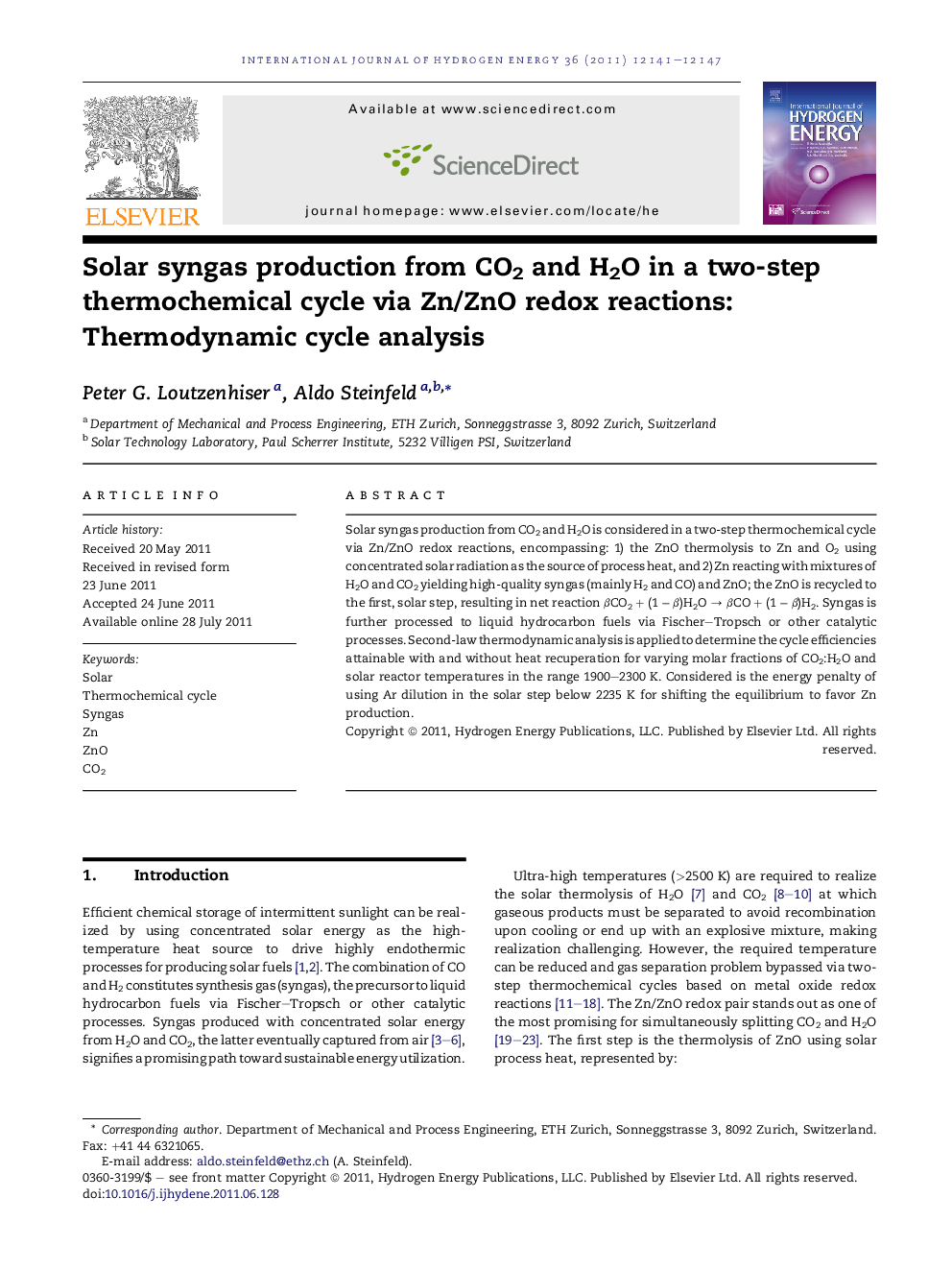| Article ID | Journal | Published Year | Pages | File Type |
|---|---|---|---|---|
| 1282414 | International Journal of Hydrogen Energy | 2011 | 7 Pages |
Solar syngas production from CO2 and H2O is considered in a two-step thermochemical cycle via Zn/ZnO redox reactions, encompassing: 1) the ZnO thermolysis to Zn and O2 using concentrated solar radiation as the source of process heat, and 2) Zn reacting with mixtures of H2O and CO2 yielding high-quality syngas (mainly H2 and CO) and ZnO; the ZnO is recycled to the first, solar step, resulting in net reaction βCO2 + (1 − β)H2O → βCO + (1 − β)H2. Syngas is further processed to liquid hydrocarbon fuels via Fischer–Tropsch or other catalytic processes. Second-law thermodynamic analysis is applied to determine the cycle efficiencies attainable with and without heat recuperation for varying molar fractions of CO2:H2O and solar reactor temperatures in the range 1900–2300 K. Considered is the energy penalty of using Ar dilution in the solar step below 2235 K for shifting the equilibrium to favor Zn production.
► A solar thermochemical cycle for splitting H2O and CO2 is thermodynamically analyzed. ► The 2-step cycle is based on Zn/ZnO redox reactions. ► Considered is the energy penalty of using Ar dilution in the solar step below 2235 K. ► At 2235 K and 1 bar, the cycle efficiency reaches 31.5% without heat recuperation. ► At 2030 K, cycle efficiencies of up to 52% are attainable with heat recuperation.
